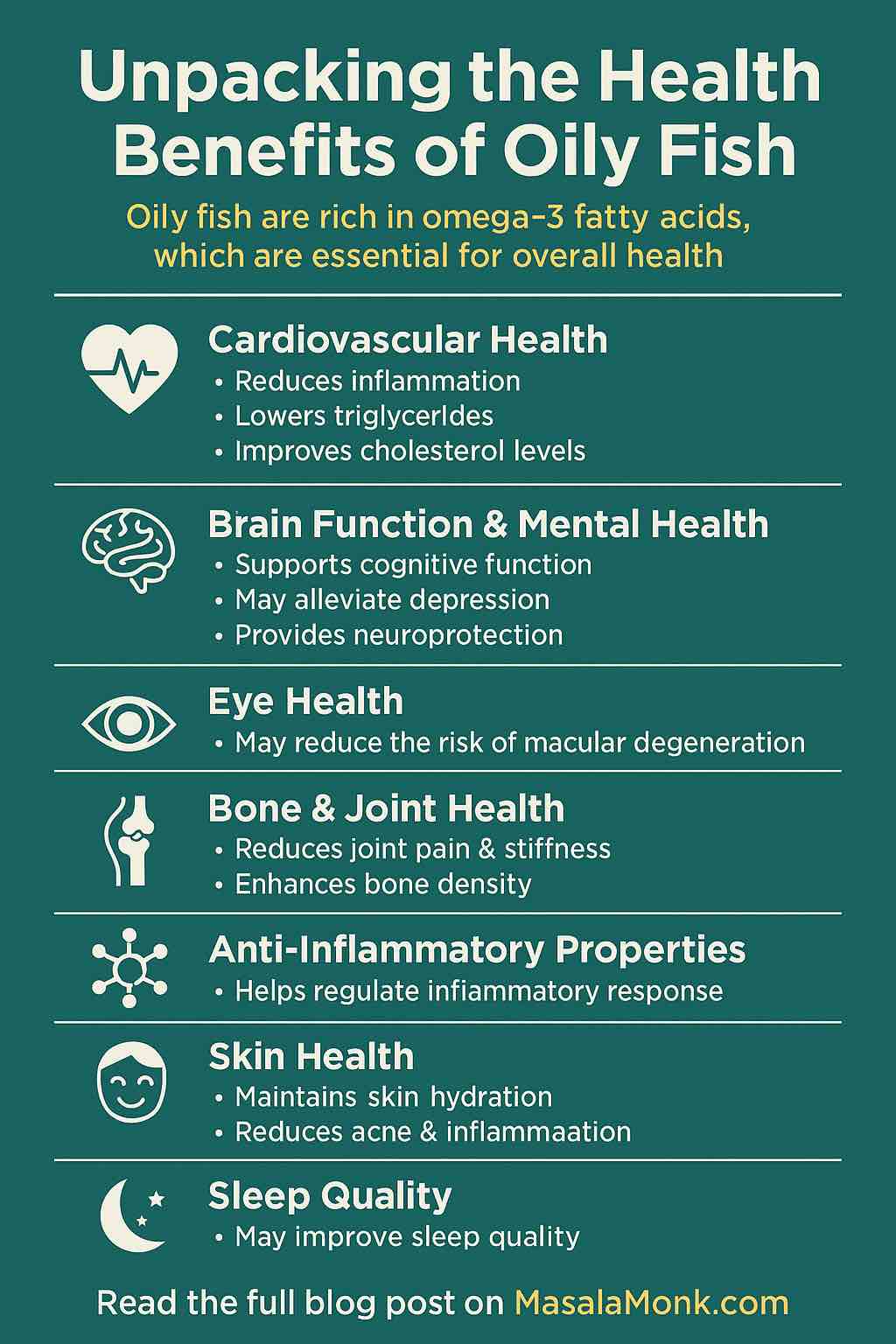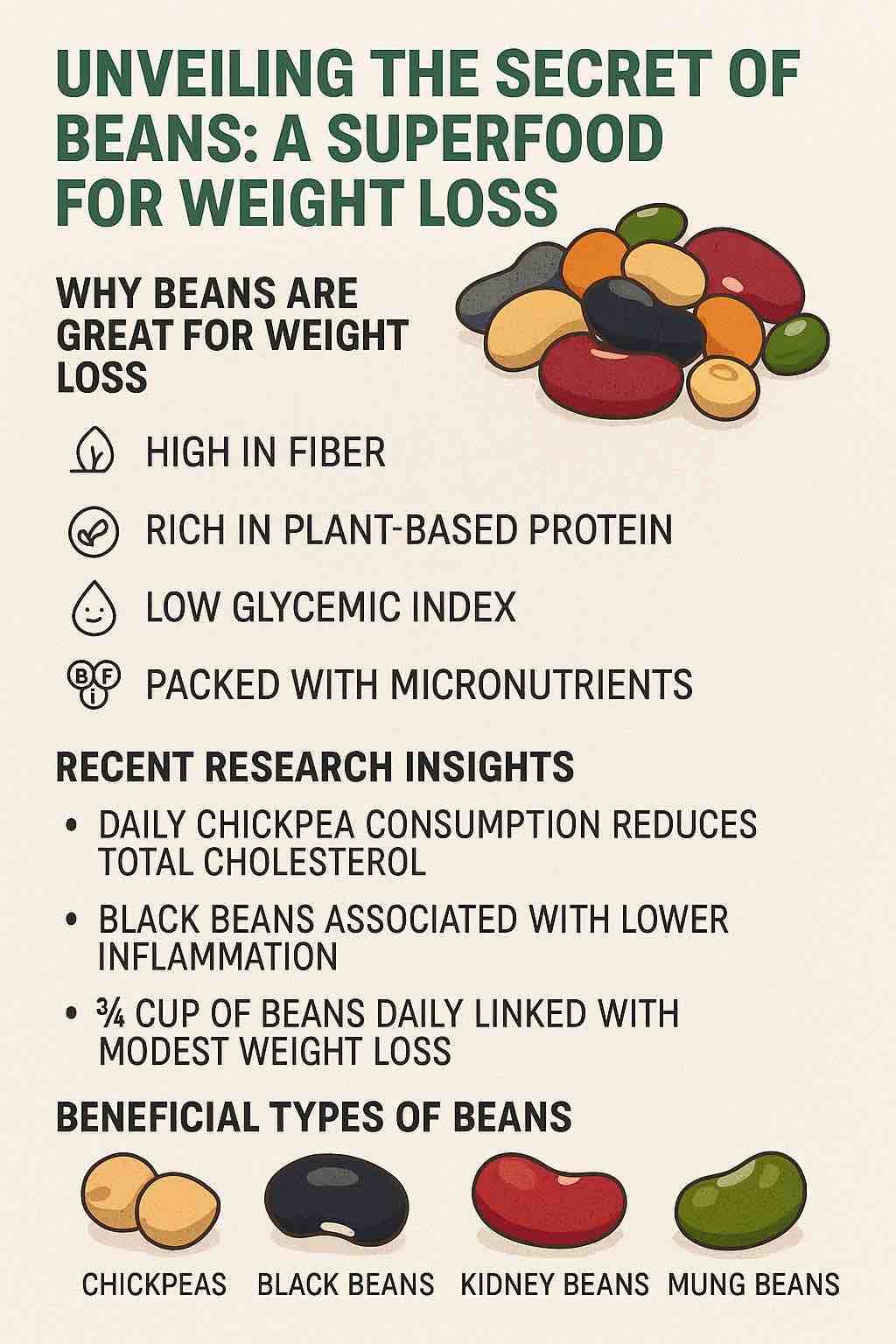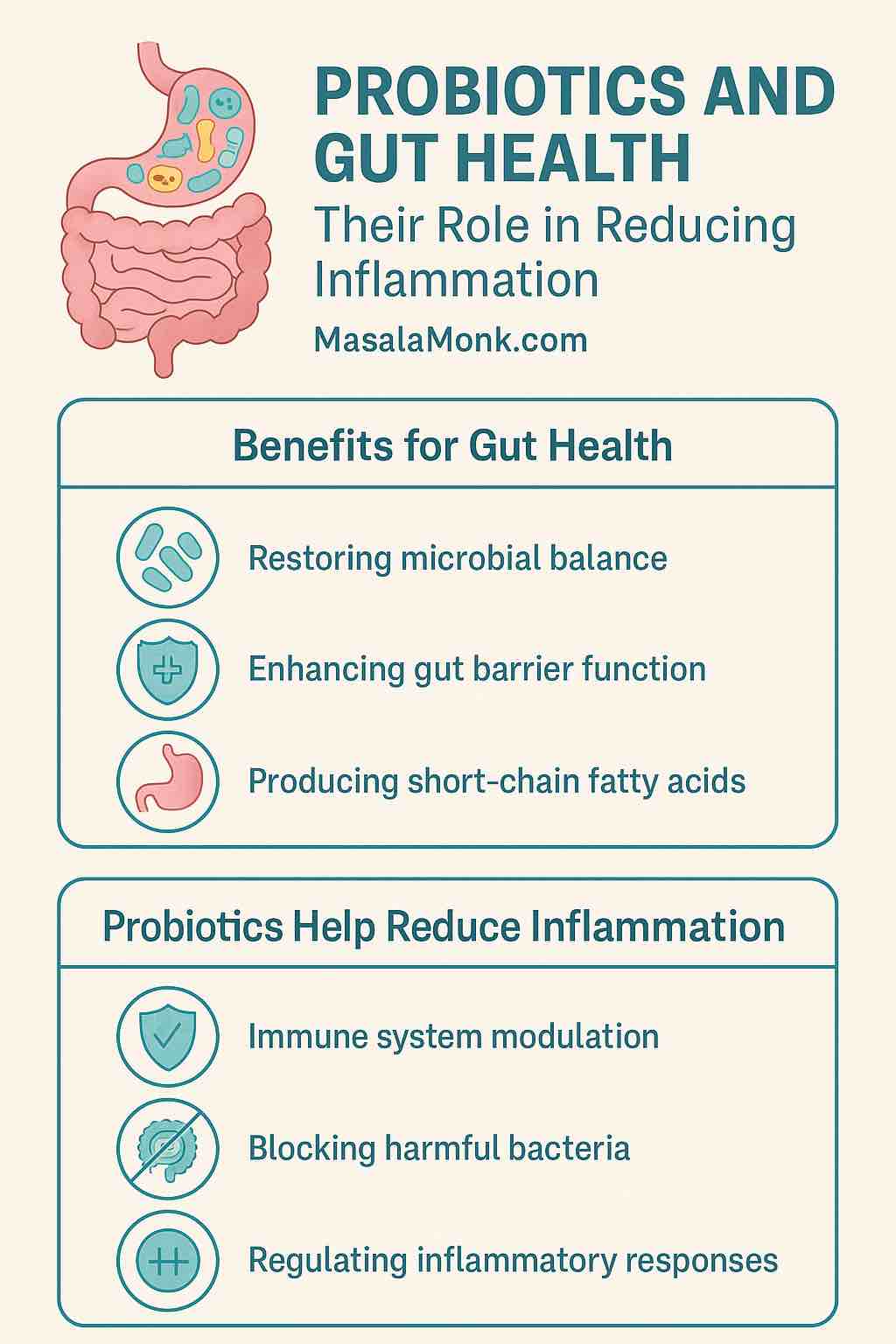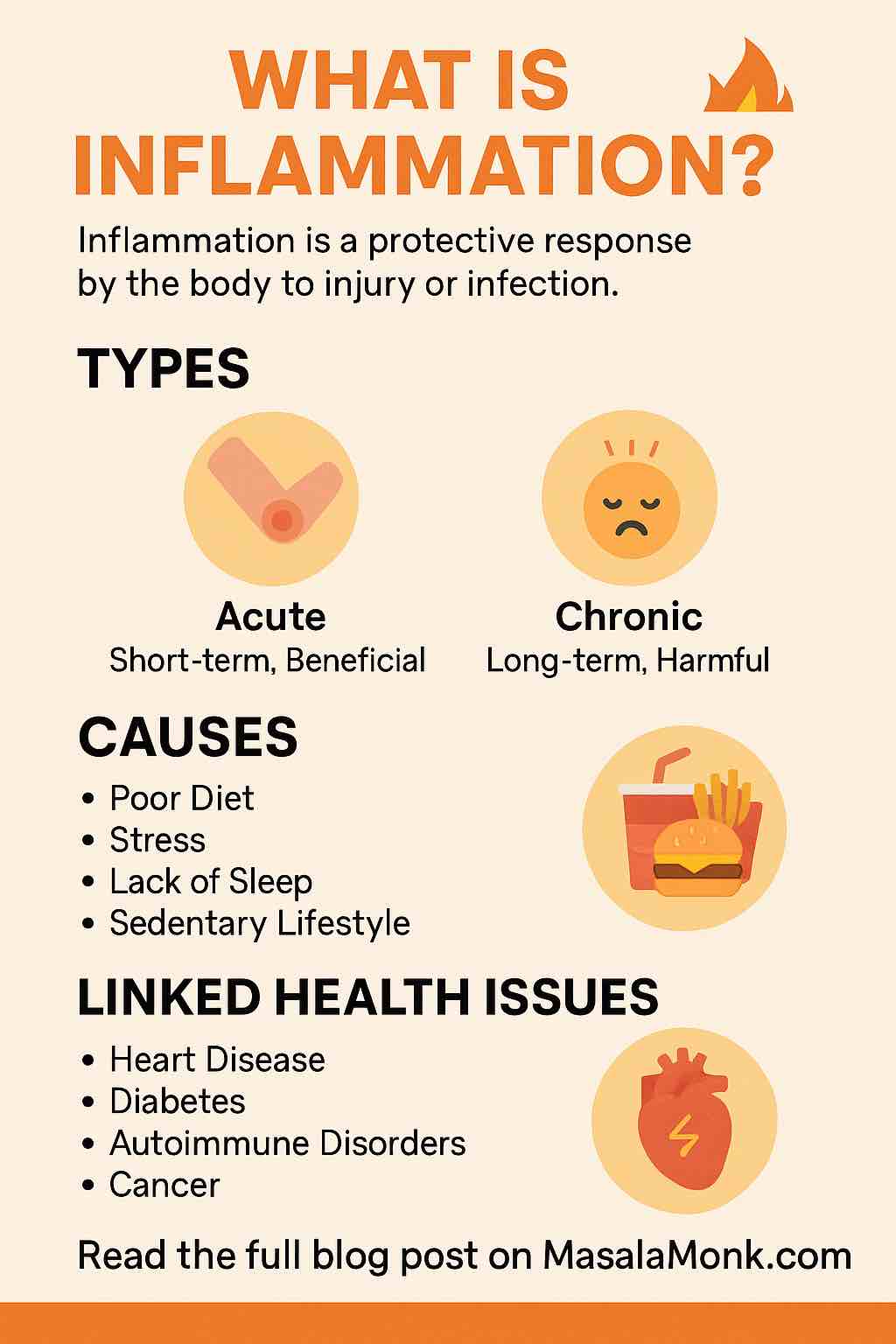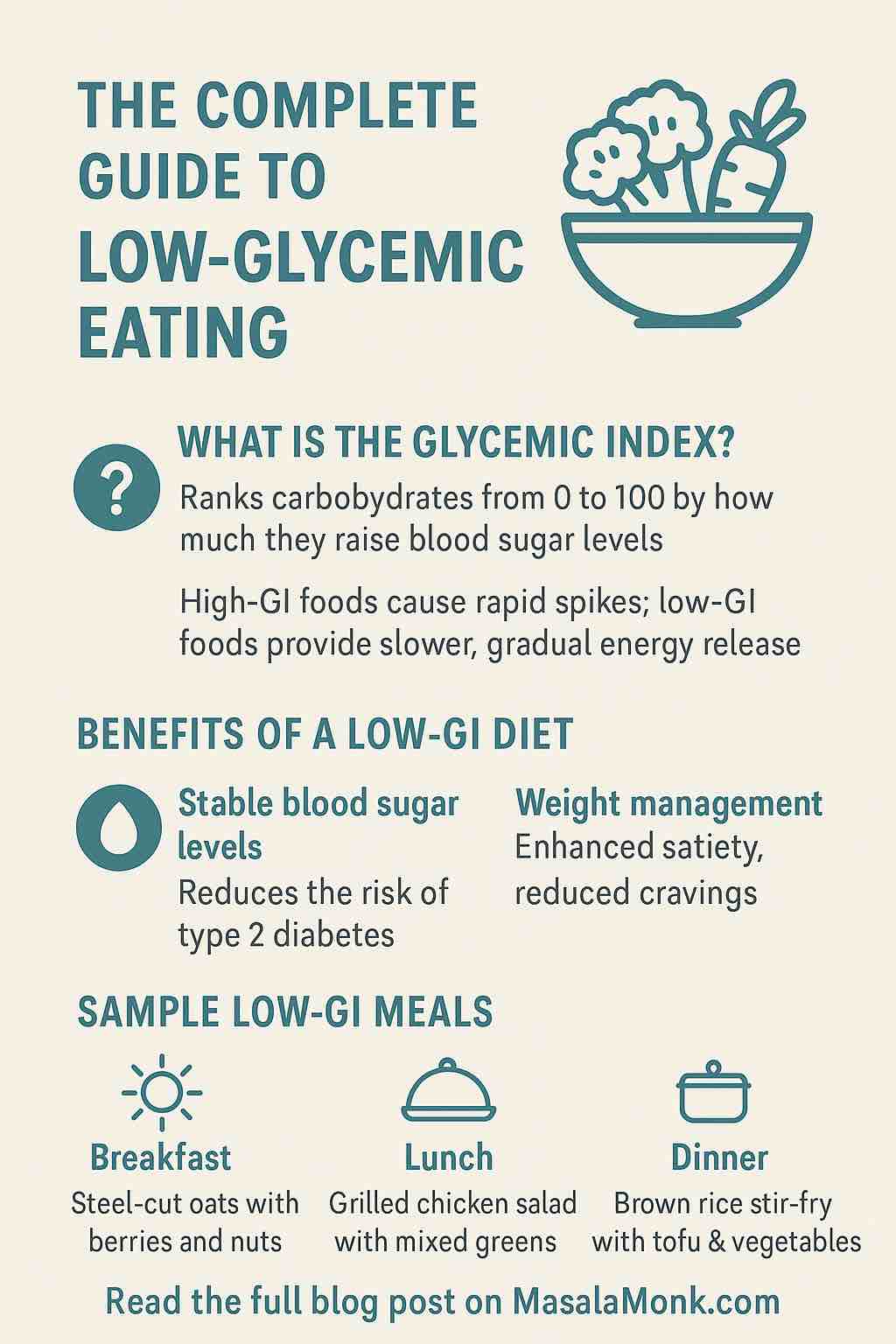
In a world overflowing with diet trends and nutritional buzzwords, low-glycemic eating stands out—not because it’s flashy or restrictive, but because it’s rooted in science, sustainability, and real health benefits. Whether you’re trying to stabilize your blood sugar, lose weight, improve your energy, or simply eat smarter, the glycemic index (GI) is a powerful tool.
In this comprehensive guide, we’ll break down what the glycemic index really means, why it matters, and how you can make it work for your lifestyle—vegan, keto, traditional, or anywhere in between. Plus, don’t miss our free gift: a downloadable Low Glycemic Foods PDF with categorized food lists for easy meal planning.
👉 Click here to download your FREE Low Glycemic Foods PDF
🔬 What Is the Glycemic Index (GI)?
The Glycemic Index is a scale from 0 to 100 that ranks how quickly carbohydrate-containing foods raise your blood sugar levels. The scale was developed to help people, especially diabetics, manage blood glucose levels more effectively.
- High-GI foods (70 and above): Digested quickly, causing a rapid rise in blood glucose.
Examples: white bread, sugary cereals, instant rice. - Medium-GI foods (56–69): Moderate impact.
Examples: sweet corn, bananas, couscous. - Low-GI foods (55 or less): Broken down slowly, leading to gradual energy release.
Examples: lentils, apples, oats.
Why does this matter? Because spikes in blood sugar can lead to energy crashes, insulin resistance, weight gain, and increased risk of chronic diseases like type 2 diabetes and heart disease.
📥 Want an at-a-glance reference? Download our Low-Glycemic Foods PDF here
💡 Glycemic Index vs. Glycemic Load: What’s the Difference?
While GI measures how fast carbs raise blood sugar, Glycemic Load (GL) takes portion size into account—offering a more practical view of a food’s actual impact.
Glycemic Load = (GI x Carbohydrate content per serving) ÷ 100
So, a food might have a high GI but a small portion may have a low GL—making it more acceptable in moderation.
Example: Watermelon has a GI of ~76, but its glycemic load is only 4–5 for a typical serving. That makes it a better choice than the GI alone would suggest.
Both metrics are valuable—use GI for food quality and GL for quantity guidance.
🧬 The Science-Backed Benefits of Low-GI Eating
✅ 1. Better Blood Sugar Control
Low-GI foods prevent spikes and crashes, making them ideal for people with diabetes, PCOS, insulin resistance, or just those seeking stable energy throughout the day.
✅ 2. Weight Management
Foods with a low GI tend to be more filling, which helps reduce snacking and lower overall calorie intake—supporting sustainable weight loss.
✅ 3. Reduced Risk of Chronic Disease
Low-GI diets are associated with lower LDL cholesterol, improved heart health, and reduced inflammation.
✅ 4. Enhanced Endurance & Energy
Athletes and active individuals benefit from the steady fuel supply that low-GI foods provide, improving physical performance and recovery.
📘 Our free Low-Glycemic Foods PDF lists GI ratings and categories for hundreds of foods to help you stay on track.
🥦 What Can You Eat on a Low-GI Diet?
Here’s the good news: You don’t have to give up carbs. Instead, you learn to choose the right carbs.
Here are some low-GI food groups you’ll find in our downloadable PDF:
- Whole Grains: Steel-cut oats, quinoa, bulgur
- Legumes: Lentils, black beans, chickpeas
- Vegetables: Leafy greens, broccoli, zucchini
- Fruits: Berries, apples, pears
- Dairy & Alternatives: Greek yogurt, almond milk
- Sweeteners: Stevia, monk fruit, small amounts of honey
- Snacks: Nuts, seeds, hummus with raw veggies
💾 Click to grab the full PDF here – includes bonus low-GI snacks and desserts!
🍽️ Low-GI Meal Plans for Every Diet
🔸 Traditional Eater
- Breakfast: Steel-cut oats topped with chia seeds, almonds, and berries
- Lunch: Grilled chicken salad with mixed greens, tomatoes, and olive oil vinaigrette
- Dinner: Brown rice stir-fry with tofu, broccoli, bell peppers
🌱 Vegan
- Breakfast: Chia pudding with almond milk, kiwi, and pumpkin seeds
- Lunch: Lentil salad with cucumber, tomato, and tahini dressing
- Dinner: Vegetable curry with quinoa and roasted eggplant
🥑 Keto (Low-Carb, Low-GI Focus)
- Breakfast: Avocado-spinach smoothie with unsweetened almond milk
- Lunch: Zucchini noodles with basil avocado pesto
- Dinner: Grilled salmon with steamed asparagus and a lemon butter drizzle
Explore more ideas in our Low Glycemic Foods PDF—perfect for weekly meal planning!
🍰 Low-Glycemic Desserts That Satisfy
Yes, you can still have dessert on a low-GI plan! Here are some satisfying options:
🥣 Traditional:
- Greek yogurt with blueberries and a touch of raw honey
🌱 Vegan:
- Chocolate avocado mousse with cacao and maple syrup
🥥 Keto:
- Coconut-almond cookies made with almond flour and stevia
Find these and more in our Free PDF—it includes snacks, sweeteners, and guilt-free indulgences.
🧭 Tips to Transition to a Low-GI Lifestyle
- Swap refined grains for whole grains
Choose brown rice, oats, and whole-wheat pasta over white flour. - Balance meals with protein and fat
They slow down carb absorption and improve satiety. - Combine high-GI foods with fiber-rich ingredients
Example: Add flax seeds or nuts to fruit smoothies. - Read food labels
Avoid added sugars and overly processed carbs. - Start with small changes
Even one low-GI swap per meal can make a difference.
📥 Your Free Resource: The Low Glycemic Foods PDF
We’ve created a beautifully organized, easy-to-navigate Low Glycemic Foods PDF to make your journey even easier.
What’s inside:
- 100+ foods organized by category and glycemic index
- Ideal for vegans, keto-followers, and omnivores
- Includes suggested swaps, snack ideas, and desserts
- Mobile- and print-friendly format
👉 Download it now for FREE and keep it handy while shopping or planning meals.
💬 Final Thoughts: Eat Smarter, Not Less
Low-GI eating isn’t about deprivation—it’s about empowerment. Understanding how foods affect your body gives you the freedom to make informed choices, enjoy balanced meals, and maintain energy without constant cravings or blood sugar swings.
Whether you’re following a specific diet or just looking to improve your health, incorporating low-glycemic foods can be a game-changer.
📘 Don’t forget to download your Low Glycemic Foods PDF and start your journey toward smarter, more sustainable nutrition today.
📘 Frequently Asked Questions (FAQs)
1. What is the Glycemic Index, and how is it calculated?
The Glycemic Index (GI) measures how quickly a carbohydrate-containing food raises blood sugar levels compared to pure glucose (which has a GI of 100). It’s calculated by feeding subjects a portion of food with 50g of carbs and measuring their blood glucose response over two hours. The results are then compared to the response from 50g of glucose.
2. What’s the difference between Glycemic Index and Glycemic Load?
Glycemic Index (GI) tells you how quickly a food spikes your blood sugar. Glycemic Load (GL) considers the quantity of carbohydrates in a standard serving, giving a fuller picture of the food’s real-life effect.
Formula: GL = (GI x grams of carbs per serving) ÷ 100.
3. Can I follow a low-GI diet if I’m diabetic or prediabetic?
Yes. In fact, low-GI diets are often recommended for people managing type 2 diabetes or insulin resistance. These diets help prevent sharp blood sugar spikes and can improve long-term glucose control when followed consistently.
4. Are all low-carb foods also low-GI?
Not always. While many low-carb foods are low-GI (like leafy greens and nuts), some high-fat, low-carb processed foods may not have a GI rating at all. Similarly, certain carbs like lentils or sweet potatoes have a low GI, despite being moderate in carbs.
5. Is fruit allowed on a low-GI diet?
Absolutely. Many fruits have a low to moderate GI, especially those high in fiber and water. Good options include apples, berries, cherries, pears, and grapefruit. Avoid or limit tropical fruits like watermelon and pineapple unless balanced with fat or protein.
6. How can I lower the GI of a meal?
You can reduce a meal’s overall GI by:
- Pairing carbs with healthy fats or proteins
- Choosing whole grains over refined carbs
- Adding vinegar or lemon juice
- Cooking pasta “al dente”
- Increasing fiber with vegetables or seeds
7. Is a low-GI diet suitable for keto, vegan, or paleo diets?
Yes! Low-GI eating is flexible:
- Keto: Focus on low-carb, naturally low-GI foods like leafy greens, avocado, nuts.
- Vegan: Emphasize legumes, whole grains, vegetables, and low-GI fruits.
- Paleo: Root veggies, lean protein, and fruits like berries can all be low-GI.
8. What are some common high-GI foods I should limit or avoid?
Avoid or minimize foods like:
- White bread and rice
- Sugary cereals
- Baked goods made with refined flour
- Instant noodles
- Soft drinks, candy, and fruit juices
Instead, refer to our Low Glycemic Foods PDF for smart swaps.
9. Will a low-GI diet help with weight loss?
Yes, it may. Low-GI foods help you feel full longer, reduce cravings, and encourage stable insulin levels, all of which can contribute to healthy weight loss when paired with a balanced lifestyle.
10. Where can I find a full list of low-GI foods?
You can download our FREE, categorized, printable guide here:
👉 Low Glycemic Foods PDF
It includes vegetables, fruits, grains, snacks, and even dessert ideas to support any dietary preference.

